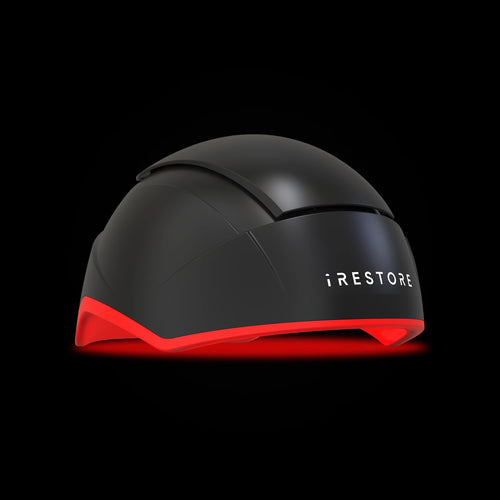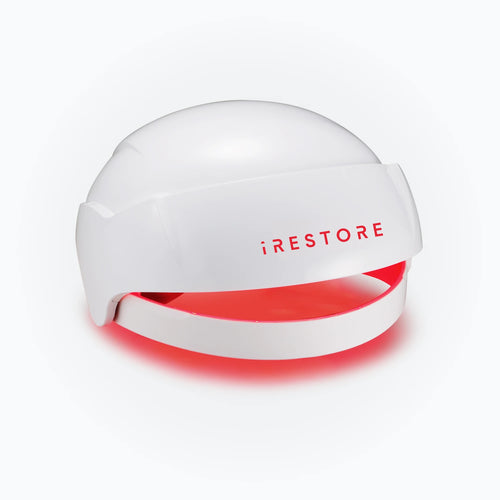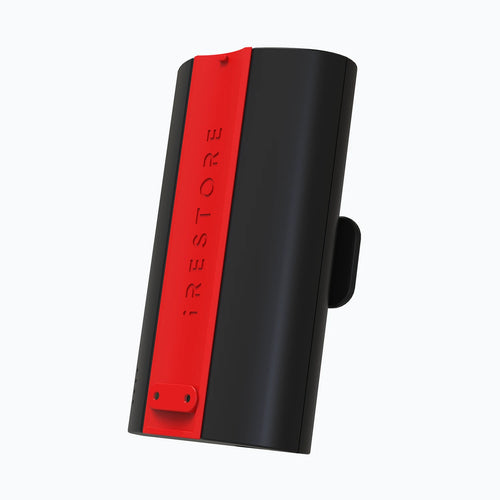Few things can shake your confidence like noticing your hairline doesn’t look the way it used to. Maybe your barber cut it unevenly, maybe years of tight hairstyles have left it patchy, or maybe it’s starting to recede earlier than expected. Whatever the reason, a messed up hairline can make styling your hair frustrating and even affect how you feel about yourself.
The good news? You’re not stuck with it forever. From quick styling tricks to long-term regrowth treatments, there are plenty of ways to fix a hairline that looks uneven, thin, or unnatural.
What Does a Messed Up Hairline Look Like?
When most people say they have a “messed up hairline,” they’re usually talking about changes caused by hair loss or damage, not just a bad haircut. A compromised hairline can appear in different ways depending on the root cause. In some cases, patchiness may be linked to conditions like alopecia areata:
-
Receding hairline: The hairline moves further back over time, usually starting at the temples. This creates an M-shaped or horseshoe pattern often linked to male pattern baldness.
-
Thinning across the front: Instead of moving back, the entire front edge becomes sparse, making the forehead look larger and hairstyles harder to manage.
-
Uneven density: Some areas along the hairline stay thicker while others thin out, leaving a patchy, irregular look.
-
Broken or weakened hair: Excessive heat styling, chemical treatments, or tight hairstyles can cause breakage along the front, making the hairline look jagged or frayed.
-
High or altered hairline from loss: Over time, shedding at the crown or temples can make the hairline appear unnaturally high compared to where it once sat.
Unlike a simple haircut mishap, these issues don’t usually fix themselves and can worsen if left untreated. Recognizing these signs early is the first step to protecting your hairline before the damage becomes more advanced.
How to Fix a Messed Up Hairline
There’s no one-size-fits-all solution for a messed up hairline. The right fix depends on the cause whether it’s genetics, tension, damage, or lifestyle habits. Here are the most effective strategies, ranging from everyday changes to clinically proven treatments.
1. Identify the Root Cause
Guessing rarely works. Start by figuring out why your hairline is changing. Common triggers include stress, hormones, and scalp conditions, similar to the most common causes of hair loss. Is it hereditary (male pattern baldness)? Stress-related shedding? Breakage from tight styles? Or chemical damage?
A dermatologist or trichologist can help diagnose the issue and guide you toward the right treatment path.
2. Adjust Your Styling Habits
Hairstyles that constantly pull on the scalp braids, ponytails, or tight fades, put strain on follicles and can cause traction alopecia.
-
Opt for looser, low-tension styles.
-
Limit daily manipulation and heat styling.
-
Even “protective” styles can backfire if they’re too tight or done too often.
3. Strengthen Your Hair Care Routine
Your hairline is more fragile than the rest of your scalp. Treat it gently.
-
Use sulfate-free, mild shampoos to avoid irritation.
-
Don’t over-wash, it strips natural oils that protect follicles.
-
Reduce harsh chemical treatments like bleaching, relaxing, or frequent coloring.
-
Keep hot tools on a low-to-medium setting.
4. Support Hair Health Through Nutrition & Lifestyle
Your follicles need fuel. Deficiencies in iron, vitamin D, zinc, and protein are linked to thinning and shedding.
-
Eat a nutrient-dense diet rich in whole foods.
-
Stay hydrated to maintain scalp health.
-
Manage stress with sleep, exercise, and relaxation, since chronic stress can double your risk of hair loss.
5. Explore Natural Remedies (With Realistic Expectations)
Some natural approaches can support scalp circulation and reduce inflammation:
-
Castor oil, rosemary oil, and coconut oil have shown potential for promoting hair thickness when used consistently.
-
Scalp massage helps increase blood flow, which can encourage healthier growth.
-
Keep in mind: these methods are supportive, not cures for advanced hair loss.
6. Use Clinically Proven Hair Growth Treatments
Two FDA-recognized approaches stand out:
-
Minoxidil (topical): Extends the growth phase of hair follicles, improving density over time.
-
Low-Level Laser Therapy (LLLT): Devices like the iRESTORE Laser Hair Growth System stimulate follicles at the cellular level, improving thickness and slowing recession. LLLT is non-invasive, safe, and effective for both men and women with early-to-moderate hairline thinning.
7. Consider Professional Options
For advanced or long-standing hairline loss, medical treatments may be necessary:
-
PRP (Platelet-Rich Plasma) Therapy: Uses your own growth factors to stimulate follicles.
-
Hair transplant surgery: Moves healthy follicles from the back of your head to the front, restoring a natural hairline permanently.
-
Scalp micropigmentation (SMP): A non-surgical option that tattoos pigment onto the scalp to mimic fuller density.
Restoring your hairline starts with understanding the cause, building supportive lifestyle habits, and using proven therapies like iRESTORE’s FDA-cleared laser technology to encourage long-term regrowth.
Preventing Hairline Issues in the Future
Repairing a hairline is only half the battle, keeping it strong and healthy over the long run matters just as much. Prevention is about protecting the follicles you still have and making sure your efforts to restore growth last for years to come. Learn more with our hair loss prevention tips.
1. Protect Your Follicles From Stress
Think of your hairline as delicate because it is. Repeated pulling from tight hairstyles or frequent use of harsh chemicals weakens follicles over time. Choosing low-tension styles and gentler care routines helps preserve the progress you’ve made.
2. Prioritize Scalp Health
A healthy scalp is the foundation of a healthy hairline. That means regular cleansing to prevent buildup, keeping the skin hydrated, and even protecting it from UV damage when you’re outdoors. A nourished scalp creates the right environment for strong, consistent growth.
3. Stay Committed to Your Growth Routine
Whether you’re using low-level laser therapy with iRESTORE, topical treatments, or nutritional support, consistency is the real difference-maker. Think of prevention as maintenance just like working out or eating well, results build with steady effort.
4. Support Hair From the Inside
Your diet, sleep, and stress levels directly influence follicle health. A nutrient-rich lifestyle filled with proteins, vitamins, and minerals helps sustain your hairline, while adequate rest and stress control keep the growth cycle on track.
5. Catch Problems Early
Hairline changes often start small, a bit of thinning at the temples or uneven density. Spotting these shifts early means you can step in with treatments before the problem grows, making prevention far easier than correction.
When to See a Professional
Not every hairline issue can be solved at home. If you notice sudden thinning, scarring, or irritation along your hairline, it’s time to consult a dermatologist. A professional can diagnose the cause, rule out medical conditions, and guide you toward advanced options like PRP therapy or hair transplants when necessary. Even for mild changes, expert advice can save time and ensure you’re on the right path.
Conclusion
A messed up hairline can feel discouraging, but it’s not the end of the story. Whether the cause is genetics, tension, or everyday damage, there are proven ways to restore balance and bring back your confidence. The key is taking action early protecting your follicles, supporting scalp health, and committing to consistent treatment.
For those looking for a safe, non-invasive solution, the iRESTORE Laser Hair Growth System offers FDA-cleared technology designed to stimulate follicles and encourage natural regrowth. It’s an effective way to strengthen your hairline, maintain results, and take control of your hair health from the comfort of home.
FAQs
Can a messed up hairline grow back?
Yes, in many cases. If the follicles are still active, treatments like low-level laser therapy, minoxidil, and lifestyle improvements can stimulate regrowth. Severe cases may require professional treatments like PRP or hair transplant surgery.
How do I know if my hairline is receding or just maturing?
A maturing hairline usually evens out naturally in your 20s and doesn’t keep moving back. A receding hairline continues to thin at the temples or crown over time and may progress without treatment.
What is the fastest way to fix a messed up hairline?
Quick fixes include adjusting your hairstyle, using hair fibers, or scalp micropigmentation. For long-term results, clinically proven treatments like laser therapy or minoxidil are more effective.
Does iRESTORE help with hairline regrowth?
Yes. The iRESTORE Laser Hair Growth System uses FDA-cleared low-level laser therapy (LLLT) to stimulate follicles, increase thickness, and encourage natural regrowth along the hairline and crown.
Disclaimer: The iRESTORE blog is for informational purposes only and is not intended to replace professional medical advice or treatment. Please do not ignore professional guidance because of information you’ve read here. If you have concerns about your hair or skin health, we encourage you to consult a qualified healthcare professional.



















